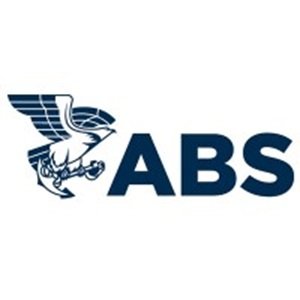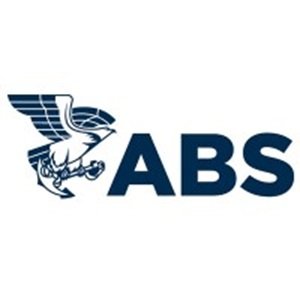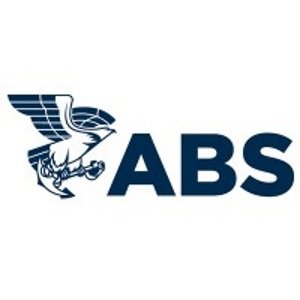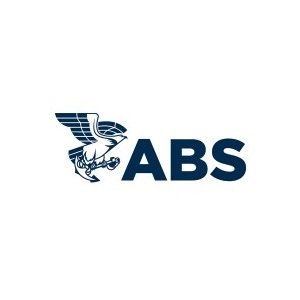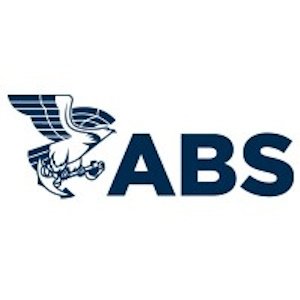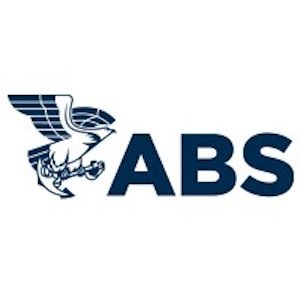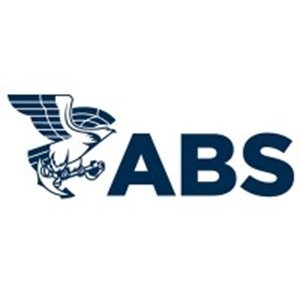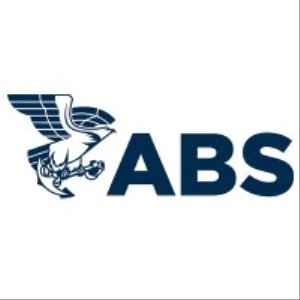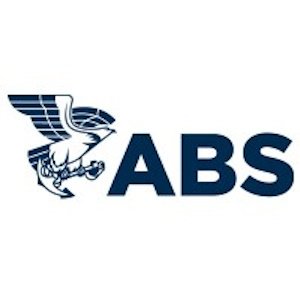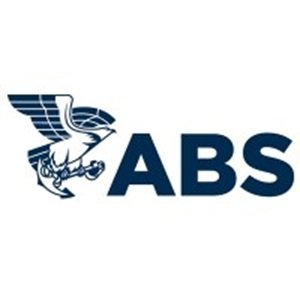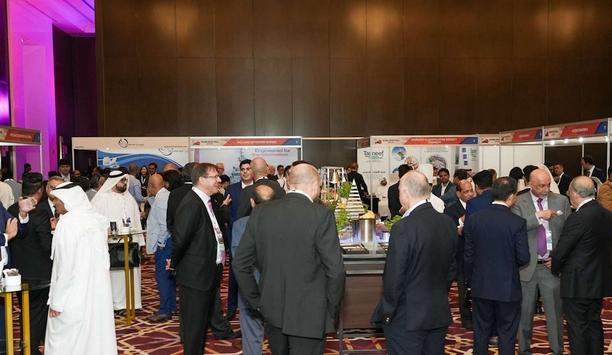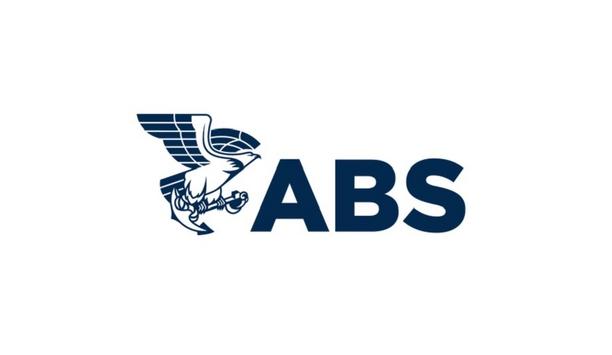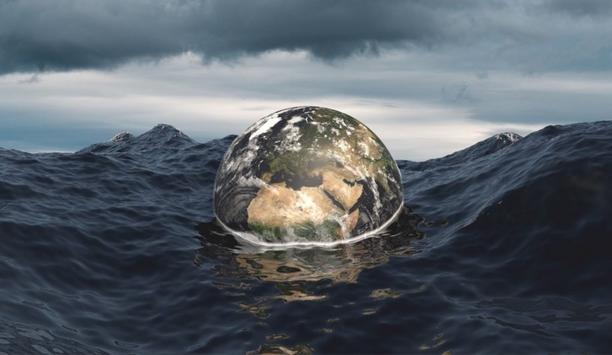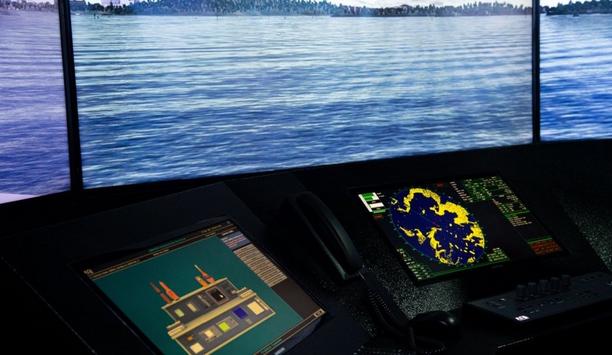American Bureau of Shipping (ABS) - Experts & Thought Leaders
Latest American Bureau of Shipping (ABS) news & announcements
The regional offshore industry is gearing up for one of its most anticipated events of the year: the 3rd Offshore Support Vessels (OSV) Conference, taking place on 20–21 May 2025 at the iconic Rixos Marina Abu Dhabi. The event will serve as a crucial platform for strategic dialogue, commercial engagement, and technological exchange across the offshore marine logistics and energy sectors. Organised under the theme “Charting New Frontiers in Offshore Innovation and Excellence,” the 2025 edition builds on the momentum of its previous iterations, bringing together senior decision-makers, technical experts, and commercial stakeholders from across the MENA region and beyond. Insightful sessions on various subjects As offshore exploration and development gain traction amidst global energy transitions, the conference aims to spotlight innovation, operational resilience, and sustainable growth in offshore support services. Attendees can look forward to insightful sessions exploring: Regional fleet modernization and shipbuilding growth Digitalization, AI, and automation in OSV operations The energy mix: decarbonisation, electrification, and hybrid propulsion Human capital development and safety excellence Regulatory updates and classification developments The speaker lineup includes high-level representatives from ADNOC Logistics & Services, Saudi Aramco, Zamil Offshore, Bourbon, International Maritime Industries, ABS, and Wärtsilä, among others. The program is curated to deliver a comprehensive overview of market trends, investment priorities, and innovation pathways. Exhibition zone to showcase offshore solutions In addition to the strategic conference sessions, a boutique exhibition zone will showcase the latest offshore solutions, vessel technologies, and operational services. Attendees will also benefit from facilitated networking, one-on-one business matchmaking, and industry roundtables. With over 400 industry professionals expected to attend, the 3rd Offshore Support Vessels Conference is poised to help chart the course for the next phase of offshore and maritime development in the region.
ABS issued an approval in principle (AIP) to Samsung Heavy Industries (SHI) for its design of a multi-purpose liquefied natural gas (LNG) floating facility for deep water (MLF-O). Called MLF-O, the next-generation design from SHI optimises the production facility for deepwater areas with a wave height of nine metres. According to SHI, the design has the advantage of providing faster delivery and cost-effective efficiency compared to onshore plants. ABS completed design reviews based on class and statutory requirements. LNG cargo hold and hull The MLF-O is designed to minimise internal shock from sloshing by configuring the cargo hold in two rows. By standardising the unit’s LNG cargo hold and hull, SHI says capacity can increase from 180,000 to 220,000 cubic metres. It is the second standard FLNG model developed by SHI, following the multi-purpose LNG floater-nearshore (MLF-N) in 2023, which was designed for coastal areas with an average wave height of two metres or less. Both are targeting overseas gas field development projects. Offshore gas terminal market The MLF-O is designed to minimise internal shock from sloshing by configuring the cargo hold in two rows “As the global pioneer in supporting floating energy production facilities, ABS is dedicated to advancing the safety and reliability of these assets. We recognise that working together with forward-thinking and safety-driven partners like SHI is important when addressing new technologies and designs for the rapidly evolving offshore gas terminal market,” said Patrick Ryan, ABS Senior Vice President and Chief Technology Officer. “MLF-O is an innovative solution that minimises operating costs and innovatively reduces delivery times to meet the needs of our customers,” said Hae-Ki Jang, Vice President and Head of Technology Development at Samsung Heavy Industries, noting that his company aims to maintain its position as a pioneer in the FLNG market. Evolution of gas development ABS is the preferred classification organisation for the offshore energy industry and has been integral to the evolution of gas development with a long history of working with floating gas concepts. As a trusted pioneer in verification, certification and classification services, ABS continues to play a critical role in the evolution of offshore production units, helping the industry navigate with confidence.
How does ammonia behave when it leaks in an engine room? How does a cloud of escaped ammonia disperse during bunkering operations? These and many other critical safety questions that must be understood if ammonia is to become widely adopted as a marine fuel are addressed in the latest industry-leading ABS research. Risks associated with ammonia dispersion Safety Insights for Ammonia as a Marine Fuel brings together the findings of advanced ABS research into the performance of ammonia on board. Safety Insights for Ammonia as a Marine Fuel brings together the findings of advanced ABS research ABS performed computational fluid dynamics (CFD) simulations using advanced tools to quantitatively assess the risks associated with ammonia dispersion in accidental leakage scenarios. ABS engineers examined realistic bunkering situations such as ship-to-ship, terminal-to-ship and truck-to-ship, as well as ammonia dispersion from the vessel due to a leakage incident in the engine room. Analysis of ammonia dispersion studies “This publication provides a comprehensive report of ABS’ efforts to address the challenges and opportunities presented by ammonia as a marine fuel." "Through detailed analysis of ammonia dispersion studies and emergency evacuation protocols, ABS is contributing to the discourse on safe and supportable maritime fuel alternatives, fostering a culture of preparedness and resilience,” said Vassilios Kroustallis, ABS Senior Vice President, Global Business Development. Advancements in software and hardware In addition to CFD simulation analysis, ABS leveraged the latest industry best practices and advancements in software and hardware – including acoustic cameras for detecting and visualising ammonia leakage – to provide a thorough, three-part framework for owners and operators evaluating ammonia as a cleaner fuel source: Proactive regulatory engagement and risk anticipation Development and implementation of a multifaceted safety framework, combining qualitative and quantitative risk assessments Real-time monitoring and optimised emergency response
Insights & Opinions from thought leaders at American Bureau of Shipping (ABS)
Achieving optimal return on investment (ROI) for a maritime company involves a strategic combination of operational efficiency, revenue enhancement, cost control, careful financial management, attention to sustainability and regulatory compliance, and other factors. Given all the variables in play, profitability can be elusive, but our Expert Panel Roundtable has some ideas. We asked: How can maritime companies maximise return on investment (ROI)?
Ammonia is gaining traction as a future fuel in the maritime industry, primarily due to its potential to significantly reduce greenhouse gas emissions. A key driver for ammonia's interest is that it can be carbon-free when combusted, which aligns with the maritime industry's increasing pressure to meet emissions regulations. However, most ammonia production currently relies on fossil fuels. Transitioning to "green ammonia" production is crucial for sustainability. If "green ammonia" is produced using renewable energy sources, it offers a pathway to near-zero emissions shipping. Safety measures and regulations Ammonia’s volumetric energy density – higher than hydrogen – makes it more practical for onboard storage. However, ammonia is toxic, which requires stringent safety measures and regulations for handling and storage. The combustion of ammonia can produce nitrous oxide (N2O), a potent greenhouse gas. Therefore, mitigation technologies are needed. Building the necessary infrastructure for ammonia bunkering and supply will be a significant undertaking. Developing guidelines for safe use Ammonia is poised to play a significant role in the maritime industry's transition to a future The International Maritime Organization (IMO) is developing guidelines for the safe use of ammonia as a marine fuel. Increasing numbers of companies are investing in the development of ammonia-fueled vessels and technologies. European Union (EU) legislation, such as the EU Emissions Trading System (ETS) and the FuelEU initiative to support decarbonisation, are pushing the maritime industry towards the use of alternative fuels, which is increasing the potential of ammonia. While challenges remain, ammonia is poised to play a significant role in the maritime industry's transition to a more sustainable future. Ongoing research and development Ongoing research and development are focused on improving safety, reducing emissions, and scaling up production. In essence, ammonia offers a promising pathway for the maritime industry to reduce its carbon footprint, but its widespread adoption depends on overcoming technical and logistical challenges. Working toward the future of ammonia Progress is already happening as the maritime industry works toward a future that includes the use of ammonia as a fuel. For example, one project underway aims to be a pioneer in establishing a comprehensive and competitive supply chain to provide clean ammonia ship-to-ship bunkering in the U.S. West Coast. Progress is already occurring as the maritime industry works toward a future A feasibility study is being conducted at the Port of Oakland, Benicia, and nearby major ports on the U.S. West Coast. A Memorandum of Understanding (MOU) between American Bureau of Shipping, CALAMCO, Fleet Management Limited, Sumitomo Corp. and TOTE Services LLC is jointly conducting the feasibility study. "We are proud to share our industry-pioneering expertise in ammonia as a marine fuel to support this study on the U.S. West Coast,” said Panos Koutsourakis, Vice President of Global Sustainability at the American Bureau of Shipping. “Our expertise in developing safety guidelines will support the consortium to address the ammonia-specific set of safety and technology challenges.” More global ammonia developments In another development, three LPG/ammonia carrier ships have been ordered at the South Korean shipyard HD Hyundai Heavy Industries (HD HHI). Danish investment fund European Maritime Finance (EMF) and international shipping company Atlas Maritime have confirmed the order. HD HHI’s parent company, HD Korea Shipbuilding & Offshore Engineering (HD KSOE), revealed the order for $372 million in March 2024. The three 88,000 cubic-metre LPG dual-fuel carriers, capable of carrying and running on ammonia, are scheduled for delivery in December 2027. The vessels will be named EMF Viking I, II, and III. Also, Lloyd’s Register (LR) and Guangzhou Shipyard International have signed a joint development project to design the world’s largest very large ammonia carrier (VLAC). The design of the 100,000-cubic-metre vessel has been assessed in line with LR’s Structural Design Assessment and prescriptive analysis. The gas carrier will have an independent IMO Type B tank for safe carriage of the chemical. Zero-emissions operations The cargo ship, which will be 7,800 dwt, is designed to transport timber from Norway to Europe “As major economies look to co-fire ammonia in their coal power stations to reduce the CO2 footprint of their national energy mix, shipping will play a key role in distributing clean hydrogen-based commodities such as ammonia, thereby supporting nations to meet their Paris Agreement commitments," says LR's Chief Executive Nick Brown. Furthermore, a partnership of companies from Norway has ordered a pioneering short-sea cargo ship that will advance the industry’s ability to provide zero-emissions operations. The cargo ship, which will be 7,800 dwt, is designed to transport timber from Norway to Europe and will be the first to operate on ammonia and electricity. Amogy’s ammonia-to-electrical power system A start-up company focusing on ammonia-to-power technology, Amogy, demonstrated the first tugboat powered by its cracking technology just short of the fourth anniversary of the company’s launch. The trip of a 67-year-old tug along a tributary of New York State’s Hudson River is part of the company’s works to develop and commercialise its technology to decarbonise the most difficult industries. Amogy’s ammonia-to-electrical power system splits, or “cracks,” liquid ammonia into its base elements of hydrogen and nitrogen. The hydrogen is then funnelled into a fuel cell, generating the power for the vessel. Research points to the risks of ammonia The chemical, made of hydrogen and nitrogen, can also be burned as a zero-carbon fuel Today and in the future, ammonia, a main component of many fertilisers, can play a key role in a carbon-free fuel system as a convenient way to transport and store clean hydrogen. The chemical, made of hydrogen and nitrogen, can also be burned as a zero-carbon fuel. However, new research led by Princeton University scientists illustrates that even though it may not be a source of carbon pollution, ammonia's widespread use in the energy sector could pose a grave risk to the nitrogen cycle and climate without proper engineering precautions. Use of ammonia U.S. National Science Foundation (NSF)-supported research found that a mismanaged ammonia economy could ramp up emissions of nitrous oxide, a long-lived greenhouse gas around 300 times more potent than carbon dioxide and a major contributor to the thinning of the stratospheric ozone layer. The use of ammonia could lead to substantial emissions of nitrogen oxides, a class of pollutants that contribute to the formation of smog and acid rain. And it could directly leak fugitive ammonia emissions into the environment, forming air pollutants, impacting water quality and stressing ecosystems by disturbing the global nitrogen cycle. Negative impacts of an ammonia economy The researchers found that the potential negative impacts of an ammonia economy "We have great hope that ingenuity and engineering can help reduce our use of carbon-based energy sources," said Richard Yuretich, a program director in NSF's Division of Earth Sciences. "But caution is advised because of unintended environmental spillover effects that may result from new technology." The researchers found that the potential negative impacts of an ammonia economy may be minimised with proactive engineering practices, but the possibility of risks should not be taken lightly. Addressing an inconvenient reality As interest in hydrogen as a zero-carbon fuel has grown, so too has an inconvenient reality: It is notoriously difficult to store and transport over long distances, requiring storage at either temperatures below -253 degrees Celsius or at pressures as high as 700 times atmospheric pressure. Ammonia, on the other hand, is much easier to liquify, transport and store, and capable of being moved around similarly to tanks of propane. Nonetheless, the cycle of nitrogen is delicately balanced in Earth's critical zone, and extensive research must be undertaken to investigate the repercussions of ammonia combustion and to develop new methods to minimise the risks. Challenges of ammonia as a maritime fuel Here's a breakdown of the key challenges of using ammonia for maritime fuel: Toxicity and Safety: For human health, ammonia is highly toxic, posing a serious risk to human health through inhalation or skin contact. This necessitates stringent safety protocols, advanced leak detection systems, and thorough crew training. Relating to the environment, leaks can also harm aquatic ecosystems, requiring robust containment and mitigation measures. Combustion Challenges: Ammonia's combustion characteristics are less favourable than traditional fuels, requiring modifications to engine design and potentially the use of pilot fuels. Emissions: Combustion can produce nitrogen oxides (NOx) and nitrous oxide (N2O), both of which are harmful pollutants. Mitigating these emissions is crucial. "Ammonia slip" is also a concern, in which unburnt ammonia is released. Infrastructure and Supply Chain: Establishing a global network of ammonia bunkering infrastructure is a massive undertaking, requiring significant investment and coordination. Scaling up "green ammonia" production, using renewable energy, is essential for its sustainability. This requires a robust and reliable supply chain. Storage: Ammonia has specific storage requirements, and onboard storage systems must be designed for safety and efficiency. International Standards Needed: Consistent and comprehensive international regulations and standards are needed for the safe handling, transportation, and use of ammonia as a marine fuel. While the IMO is developing Guidelines, complete and ratified rules are still needed. Economic challenges: "Green ammonia" is currently more expensive than traditional fuels, although costs are expected to decrease as production scales up. Significant investments are needed in research, development, and infrastructure to make ammonia a viable maritime fuel. Also, dedicated ammonia-fueled engines are still under heavy development, and do not have widespread availability. The path to commercialisation Overcoming the variety of technical and other obstacles will require collaboration among governments, industry stakeholders, and research institutions. The timeline for ammonia deployment in maritime applications is actively unfolding, with key milestones happening now and soon. 2025 marks the first trials of two-stroke, ammonia dual-fuel engines on oceangoing ships. Engine manufacturers like MAN Energy Solutions and WinGD are progressing with their engine development, with initial deliveries soon. These pilot projects are crucial for gathering real-world data and building confidence in ammonia as a marine fuel. Development of comprehensive regulations As the maritime industry faces, ammonia is hoped to play a growing role in the fuel mix Gradual commercialisation will follow in the late-2020s as the technology matures and the infrastructure develops. The focus will be on refining engine technology, improving safety protocols, and establishing bunkering facilities in key ports. Wider adoption will likely follow in the 2030s, depending on factors such as the cost of green ammonia, the development of comprehensive regulations, and the expansion of the global supply chain. As the maritime industry faces increasing pressure to decarbonise, ammonia is expected to play a growing role in the fuel mix. Future of maritime It's likely that a combination of ammonia and other alternative fuels and technologies will be used in the future of maritime. Alternatives include methanol, liquid natural gas (LNG), hydrogen, biofuels, electric propulsion, and even nuclear power. Ammonia is a strong contender, bit it faces stiff competition from other promising technologies. The maritime industry's transition to a sustainable future will likely involve a diverse mix of fuel solutions.
More than almost any trend, decarbonisation is driving the future of maritime. That reality alone makes decarbonisation the perfect topic for our first-ever Expert Panel Roundtable column. Traditional maritime fuels, like heavy fuel oil, release harmful pollutants that contribute to air pollution and have adverse health effects. We have to do better, and discussions in the maritime industry centre on which combination of alternative fuels and other technologies can solve the shorter- and longer-term challenges of decarbonisation. For an update on the various approaches, we asked our Expert Panel Roundtable: What are the latest maritime technology trends in decarbonisation?






